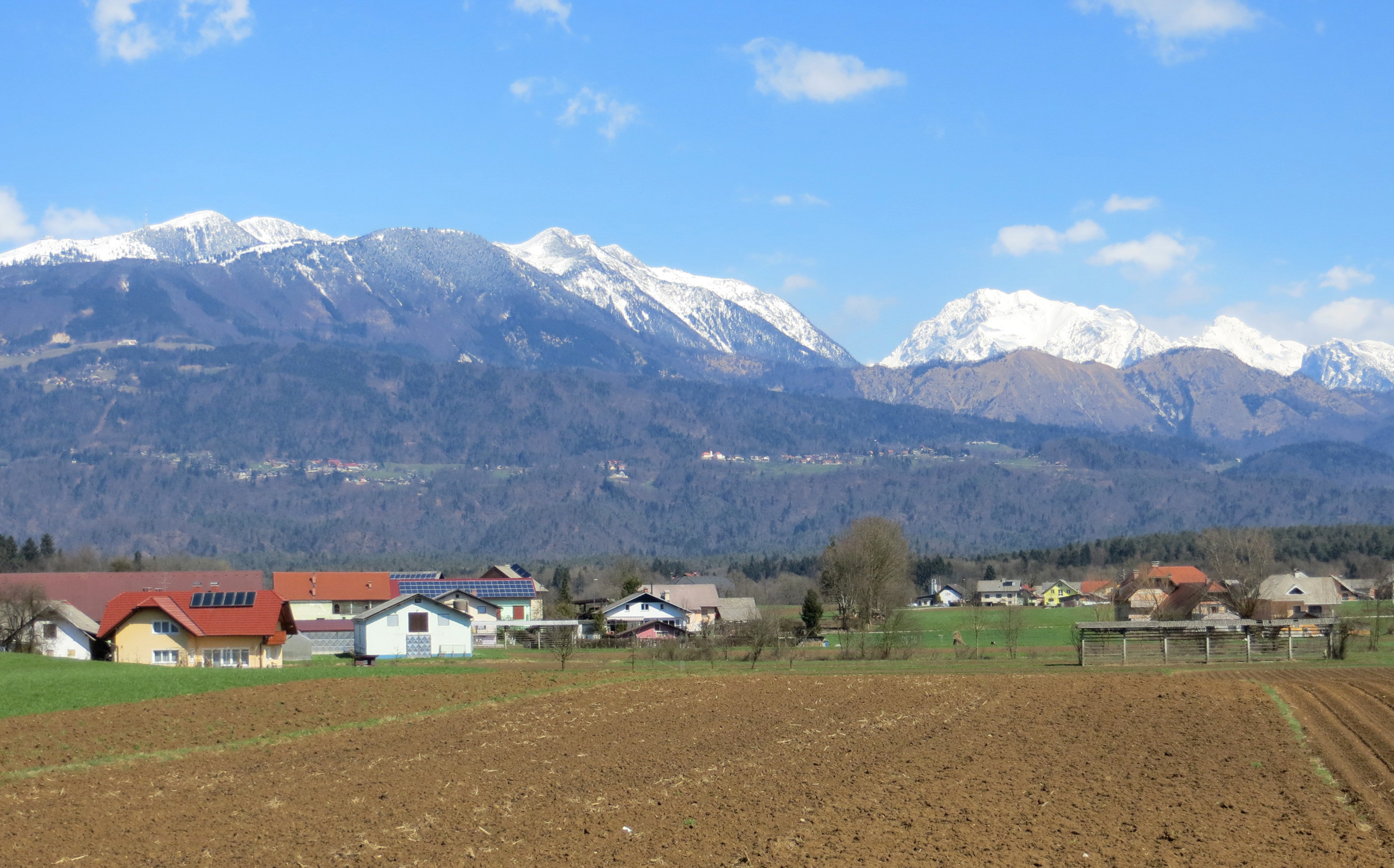Tunjice Hills on:
[Wikipedia]
[Google]
[Amazon]
 The Tunjice Hills (; ) are a group of hills around
The Tunjice Hills (; ) are a group of hills around
Tunjice Hills on Geopedia
Hills of Slovenia {{coord, 46, 17, 17, N, 14, 34, 2, E, type:mountain_region:SI, display=title
Tunjice
Tunjice (; ) is a dispersed settlement in the Tunjice Hills () west of the town of Kamnik in Upper Carniola region of Slovenia.
In the forest close to the church a " natural healing grove" with several "energy springs," known as the Tunjice Natu ...
in western Slovenia.
Geography
The southern border of the Tunjice Hills extends fromKamnik
Kamnik (; ''Leksikon občin kraljestev in dežel zastopanih v državnem zboru,'' vol. 6: ''Kranjsko''. 1906. Vienna: C. Kr. Dvorna in Državna Tiskarna, pp. 26–27. or ''Stein in Oberkrain'') is the ninth-largest town of Slovenia, located in t ...
in the east to Komenda in the west, where the hills meet the Ljubljana Basin. The hills rise to the north toward the Kamnik–Savinja Alps
The Kamnik–Savinja Alps () are a mountain range of the Southern Limestone Alps. They lie in northern Slovenia, except for the northernmost part, which lies in Austria.
The western part of the range was named the Kamnik Alps () in 1778 by the sc ...
.
Paleontology
In 1997 a fossilizedcoprolite
A coprolite (also known as a coprolith) is fossilized feces. Coprolites are classified as trace fossils as opposed to body fossils, as they give evidence for the animal's behaviour (in this case, diet) rather than morphology. The name ...
layer was discovered in the Tunjice Hills. It is approximately 13 million years old, dating from when the Pannonian Sea
The Pannonian Sea was a shallow ancient sea, where the Pannonian Basin in Central Europe is now. During its history it lost its connections with the neighbouring seas and became a lake. The Pannonian Sea existed from about 10 Ma (million years a ...
covered the area, and was probably deposited by dolphins and other vertebrates. The layer has preserved the fossilized remains of insects, fish, plants, snails, and even jellyfish. Between 2005 and 2007, the site yielded seahorse fossils that have been classified as new species: ''Hippocampus sarmaticus
''Hippocampus sarmaticus'' is an extinct species of seahorse, found in 2005 in the coprolitic horizon of the Tunjice hills Lagerstätte in Slovenia, along with the related ''Hippocampus slovenicus''.
Taxonomy
The horizon dates 13 million years b ...
'' and ''Hippocampus slovenicus
''Hippocampus slovenicus'' is an extinct species of seahorse found in 2005 in the coprolitic horizon of the Tunjice hills Lagerstätte in Slovenia along with remains of the related species '' Hippocampus sarmaticus''. The horizon dates 13 million ...
''. Other finds in the hills include a caudal vertebra from what is believed to have been a toothed whale
The toothed whales (also called odontocetes, systematic name Odontoceti) are a parvorder of cetaceans that includes dolphins, porpoises, and all other whales with teeth, such as beaked whales and the sperm whales. 73 species of toothed wha ...
.Mikuž, Vasja, & Davorin Preisinger. 2012. Vretence iz miocenskih plasti Tunjiškega gričevja. ''Folia biologica et geologica'' 53(3): 51–59.
References
External links
Tunjice Hills on Geopedia
Hills of Slovenia {{coord, 46, 17, 17, N, 14, 34, 2, E, type:mountain_region:SI, display=title